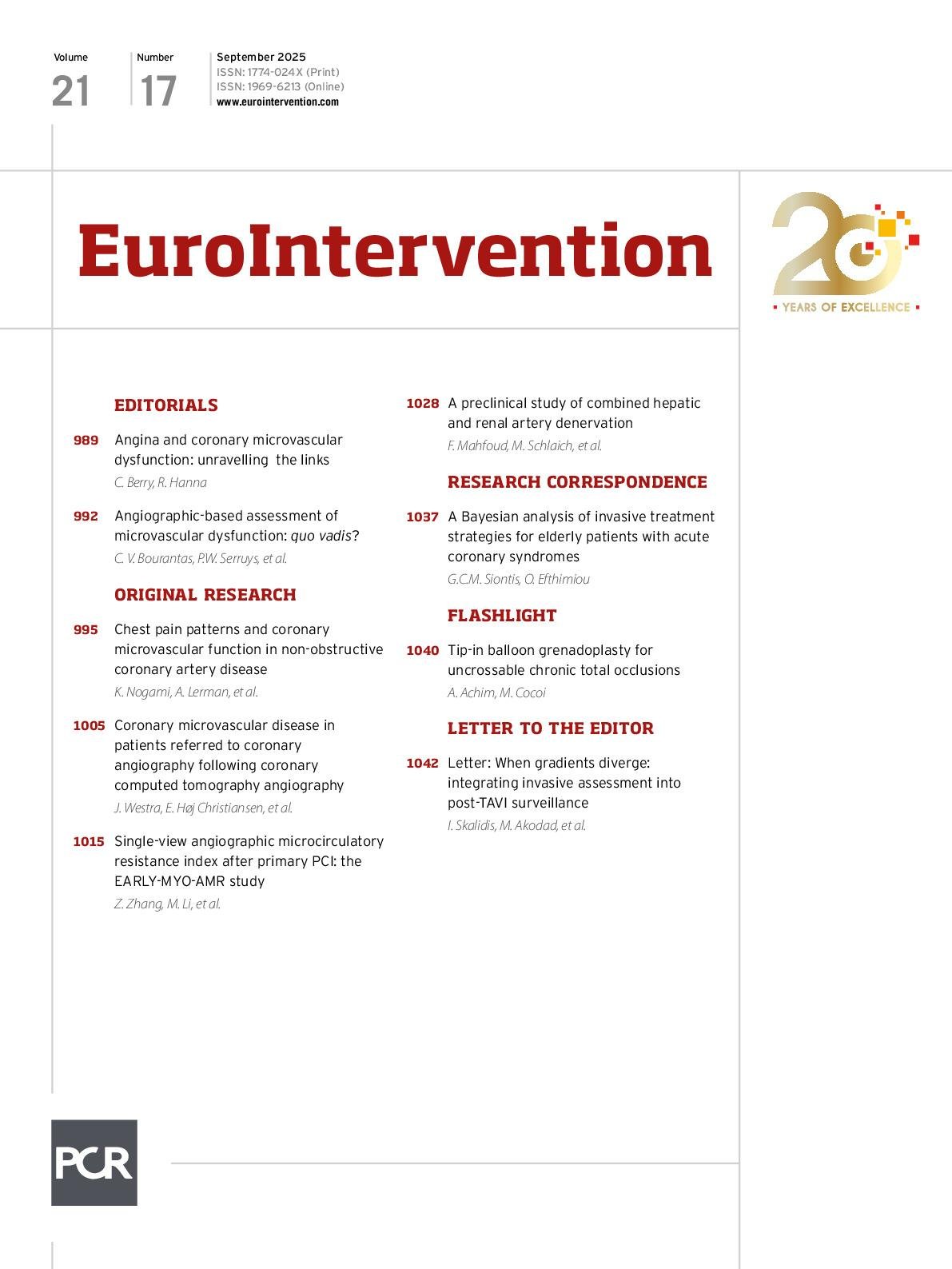Abstract
Background: Overactivity of the hepatic and renal sympathetic nerves is associated with chronic cardiovascular and metabolic conditions, including hypertension.
Aims: We studied the effect of combined renal and hepatic denervation through treatment of the common hepatic artery and the renal arteries.
Methods: Denervation was performed in the common hepatic artery and both renal arteries and their major branch vessels in normotensive swine using the same multielectrode radiofrequency (RF) ablation catheter (Symplicity Spyral). Renal and liver tissue samples were obtained for histological examination in two cohorts at 7 and 28 days post-procedure (n=5 sham, n=10 denervation for each timepoint).
Results: Combined hepatic and renal denervation was successfully achieved in all animals. At 7 days, the mean lesion depth was 5.8±1.4 mm in the renal arteries and 4.7±0.7 mm in the hepatic artery. Compared with controls, the mean renal cortical norepinephrine (NE) levels were reduced by 88.2% in the 7-day model and by 84.5% in the 28-day model. Liver NE decreased by 94.6% at 7 days and by 91.1% at 28 days (p<0.0001 for all comparisons with baseline). No inadvertent injury was detected in the treated arteries or adjacent tissues.
Conclusions: Combined hepatic and renal denervation using the same multielectrode RF denervation system resulted in a substantial reduction in both renal and hepatic tissue NE levels that was sustained up to 28 days without collateral tissue injury. These mechanistic findings may have implications for the treatment of chronic diseases impacted by hepatic and renal sympathetic nervous system overactivity.
Sign up for free!
Join us for free and access thousands of articles from EuroIntervention, as well as presentations, videos, cases from PCRonline.com

